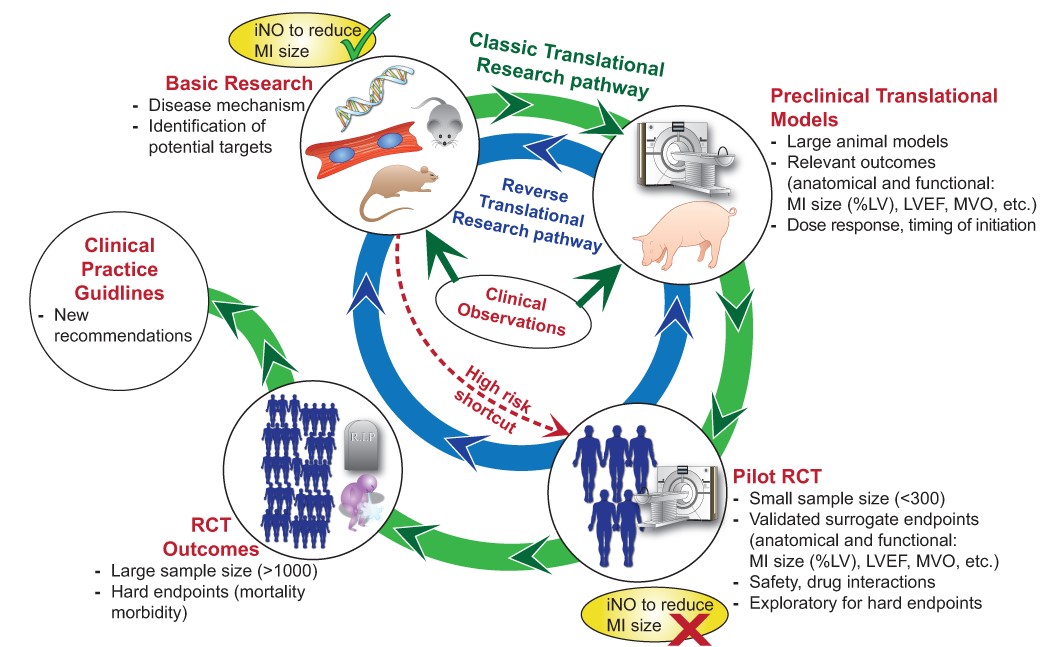
Cover image

Take a deep (nitric oxide) breath and follow the reverse translational research pathway
Manuel Lobo1, Borja Ibanez1,2,3*
1Centro Nacional de Investigaciones Cardiovasculares Carlos III (CNIC), Madrid, Spain; 2Cardiology Department, IIS-Fundación Jiménez Díaz University Hospital, Madrid, Spain; and 3CIBER de enfermedades CardioVasculares (CIBERCV), Madrid, Spain
* Corresponding author. Translational Laboratory for Cardiovascular Imaging and Therapy, Centro Nacional de Investigaciones Cardiovasculares Carlos III (CNIC), Melchor Fernández Almagro, 3, 28029, Madrid, Spain. Tel: +3491 4531340, Fax: +3491 4531200, Email: [email protected]
Take home figure In the classic view, translational research is viewed as a one-way transit from bench to bedside (translating basic discoveries into clinical applications). However, the reverse translational pathway (from clinic back to basic/experimental research) is increasingly acknowledged as a critical requirement for successful translational research. The reasons for neutral or inconclusive results in any step of the translational research pathway can often be identified and explained by returning to an earlier step. The figure shows the steps in the translational research pathway, together with the most important considerations for studies searching for infarct-limiting therapies. The translational journey can start with a basic research discovery or a clinical observation. Taking shortcuts in this pathway is usually a high-risk endeavour (e.g. performing an RCT after a positive small-animal study without first performing a large-animal pre-clinical trial). In the NOMI trial, a successful transition from basic research to pre-clinical models was followed by a pilot RCT, yielding a negative outcome: the hypothesis that iNO initiated soon before reperfusion would result in smaller infarctions was not confirmed. Important questions can be evaluated by returning to conduct new tests in the pre-clinical models, such as dose–response studies and different timings of iNO initiation. An alternative approach is to reconsider the cardioprotective target in new basic research studies. iNO, inhaled nitric oxide; LVEF, left ventricular ejection fraction; MI, myocardial infarction; MVO, microvascular obstruction; RCT, randomized clinical trial.





